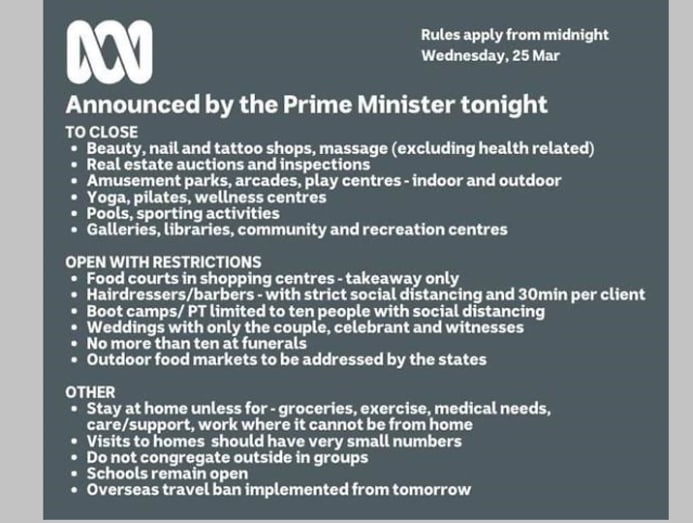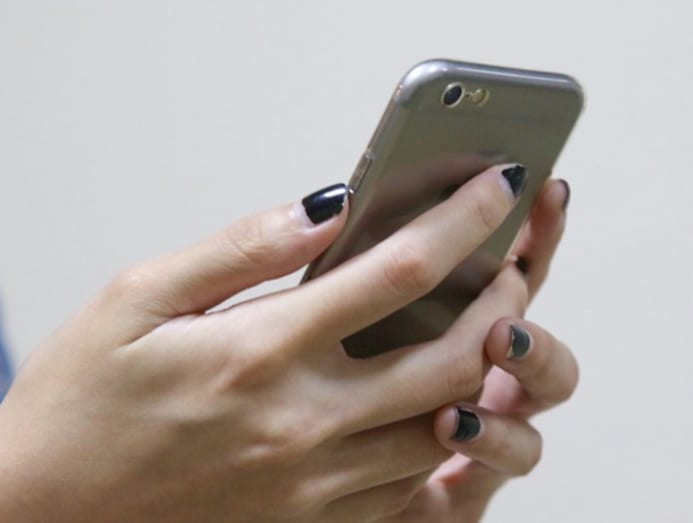Commentary: Forwarding a WhatsApp message on COVID-19 news? How to make sure you don’t spread misinformation
SINGAPORE: Guess what Singaporeans are sharing on WhatsApp these days?
If you guessed some type of coronavirus-related information, y'all're spot on.
But tin can you guess how many of these were real?
Since tardily January, after Singapore recorded its get-go few COVID-nineteen cases, our inquiry team at the Wee Kim Wee School of Communication and Information at Nanyang Technological Academy has been keeping track of messages being forwarded on WhatsApp about the COVID-19 outbreak.
This matters because WhatsApp is the nearly used messaging app in Singapore. About 84 per cent of the population utilize information technology.
READ: Commentary: It's non simply piece of work and the economy. COVID-19 is likewise changing how we use social media
LISTEN: Disruption 101: How COVID-nineteen is revolutionising work
QUITE A BIT OF MISINFORMATION SHARED
Some forwarded messages we collected were forwarded to us past others, while many came from a WhatsApp grouping that students created where members can seek verification on posts they were unsure about.
The WhatsApp group now has more than than 200 members and has received more than than 300 posts.
Our analysis involved 153 forwarded letters most COVID-xix. Through fact-checking, we establish that 35 per cent of these forwarded messages were outrightly fake.
An instance is a forwarded message that claimed drinking or gargling warm water with salt or vinegar can wash downwards the coronavirus. The Ministry building of Wellness had specifically debunked this.

Since we were interested in posts that were repeatedly shared, we just analysed letters that carried WhatsApp'southward forwarded tag.
WhatsApp installed a forwarded message tag in 2022 to curb the spread of viral falsehoods on its platform. Forwarded messages comport either a unmarried or double arrow to bespeak that a message has been forwarded. A double arrow means a message has been forwarded more than than 5 times.
Some 28 per cent of the posts we analysed were accurate, such as screenshots of emails or announcements from malls that informed their tenants they had a suspected case.
Some 20 per cent of the posts mixed true and false data. Ane post that included a video of a Malaysian pupil in London recording a bulletin for his parents claimed the student contracted the virus at a party and had died of COVID-xix. The video is existent, just the student had to clarify in a Facebook mail that he is very much alive.
READ: Commentary: Tin vitamin C really aid with your cold or fifty-fifty COVID-xix?
READ: Commentary: Can chloroquine really treat COVID-19?
The remaining 17 per cent of the posts were difficult to verify.
MISREPRESENTATIONS
Nosotros saw other examples of mixing truths and falsehoods. Some used real photos and videos but misrepresented them.
An example is a screenshot of a list of stringent measures supposedly announced past Prime Minister Lee Hsien Loong. Some users mistook it equally a list of restrictions slapped on Singapore, only this turned out to be Australia's.

While some 37 per cent of the posts we analysed contained explicit references to Singapore, showing the national focus of these forwarded posts, some 25 per cent did non contain any information about geographic location.
The absenteeism of geographic location has facilitated the spread of misinformation across countries. Just think of all the videos you've seen of accidents purportedly happening in Singapore that turned out to be events elsewhere.
But this can also be one signal nosotros can apply in assessing whether a forwarded post is true or false: We should ask ourselves, where did the event supposedly happen?
Similarly, some 73 per cent of the forwarded posts we examined did not contain whatever reference to a specific timeframe. A piece of advice, an event, or an proclamation is shared with the assumption it was recent but the mail service is silent on when this happened.
The absence of an explicit timeframe is also facilitating the spread of misinformation beyond time; this is why we run across the same piece of misinformation recur after a few months.
READ: Commentary: What does Ronan Keating know well-nigh Singapore ports?
READ: Commentary: How to stay sane in a time of COVID-nineteen information overload
Some 33 per cent of the posts we analysed also did not mention the source of the information. While misinformation typically refers to a made-up expert or misappropriated names of real people, many of the forwarded posts nosotros came across contained no source.
This raises another question we should ask ourselves when receiving such letters. Should we believe a piece of data whose source we cannot trace or verify?

WHY PEOPLE FORWARD POSTS
Sharing posts has become a grade of social substitution: The more nosotros receive posts from others, the more we share, and the cycle continues.
This course of social exchange, using viral posts as currency, has go much easier with messaging apps, such as WhatsApp, which make forwarding posts like shooting fish in a barrel.
This forwarding function, however, has besides facilitated the spread of falsehoods, triggering, for case, a series of mob killings in India after aroused residents ganged up on some men wrongly accused past viral WhatsApp messages of plotting to kidnap children.
In response, WhatsApp has limited the number of times a bulletin can be forwarded by a user. Earlier this calendar month, WhatsApp rolled out a stricter limit to forwarding by assuasive a user to forward a bulletin to only 1 chat at a time, in a bid to slow down the spread of misinformation nigh COVID-19.
READ: Commentary: Outbreaks of diseases make us exaggerate or nether-estimate risks. The COVID-nineteen shows that
READ: Commentary: Putting in 50 hours while WFH, it's a struggle to draw the line between work and home
WhatsApp too instituted forwarded tags that accompany forwarded messages. These are supposed to alarm message recipients that a particular message had been shared many times and most probable was not personally created or verified past the friend who forwarded it.
However, interviews and focus group discussions we have conducted signal that WhatsApp users empathise the forwarded tag in unlike ways.
For some, a message with a forwarded tag elicits caution and users become more than sceptical of the message's veracity. For others, receiving a message with a forwarded tag means the data is a point of a popular conversation. Others practice not remember or practice not pay attention to the forwarded tags at all.

TACKLING MISINFORMATION IS LIKE TACKLING A VIRUS
Sharing a post is easy merely undoing the effects of misinformation is not.
News outlets, fact-checking sites, and government agencies can issue corrections to debunk a slice of misinformation, but studies have constitute that corrections are not always effective in correcting misperceptions.
Simply similar fighting COVID-xix'due south public health threat, everyone of us must practice our part.
In an earlier study, nosotros found most Singaporeans would ignore a slice of misinformation if they come across one, instead of taking proactive measures, such every bit reporting the postal service to have information technology removed or telling the one who posted that the information is false.
READ: Commentary: Science goes viral, thanks to COVID-19. But in that location are roadblocks forth the mode
Only by not doing anything, we permit the spread of falsehoods.
We should besides practice caution when we share posts on social media or forrad on messaging apps.
We should scrutinise a message before forwarding it. We can also search for related information online: Have legitimate information sources, such as news organisations, reported virtually it?
Online falsehoods piece of work similar viruses. They infect i vulnerable host who can then spread them to other hosts.
One user wrongly assertive in a falsehood and and then sharing it with others, instead of taking steps to verify the data showtime, is all it takes to start the spread of misinformation.
We share posts for various reasons, from something as simple as wanting to amuse ourselves to something more altruistic such as showing others that we care.
Whatever the reason is, sharing should not be at the expense of misinforming other people, especially at a time like this, when people need accurate data more e'er.
LISTEN: How many stars will y'all requite Singapore'due south F&B industry this COVID-nineteen flavour?
BOOKMARK THIS: Our comprehensive coverage of the novel coronavirus and its developments
Download our app or subscribe to our Telegram channel for the latest updates on the coronavirus outbreak: https://cna.asia/telegram
Edson C Tandoc Jr is an Acquaintance Professor at the Wee Kim Wee School of Communication and Data at NTU. This work is office of his Information Integrity Initiative project that focuses on studying information quality during a catamenia of misinformation.
Mak Weng Wai is a final-year student at the Schoolhouse of Humanities at NTU, majoring in History.
Source: https://cnalifestyle.channelnewsasia.com/commentary/commentary-forwarding-whatsapp-message-covid-19-news-how-make-sure-you-dont-spread-misinformation-284026
0 Response to "Commentary: Forwarding a WhatsApp message on COVID-19 news? How to make sure you don’t spread misinformation"
Post a Comment